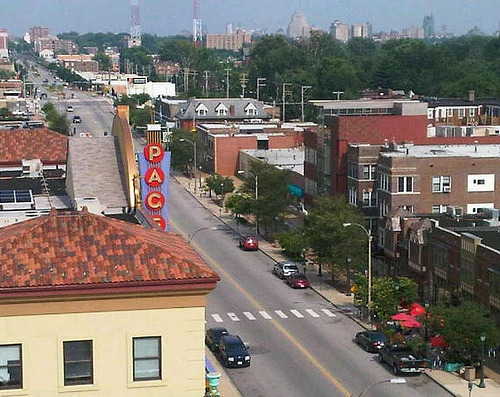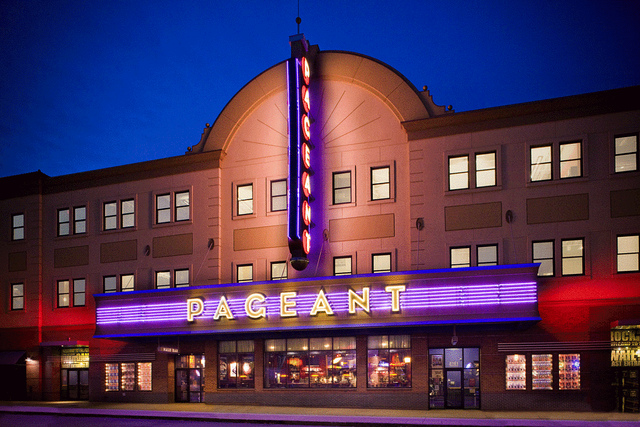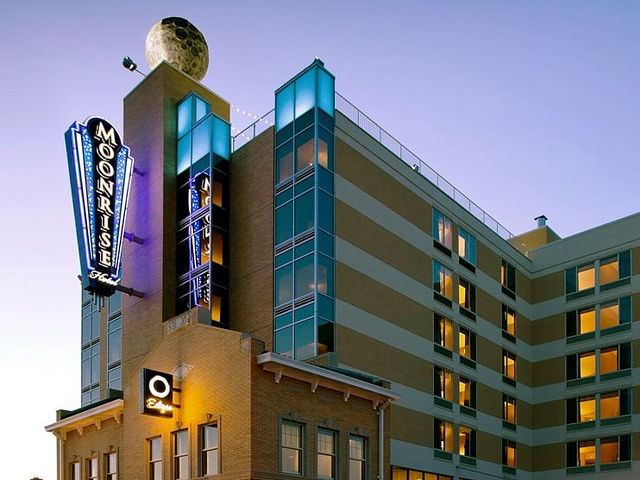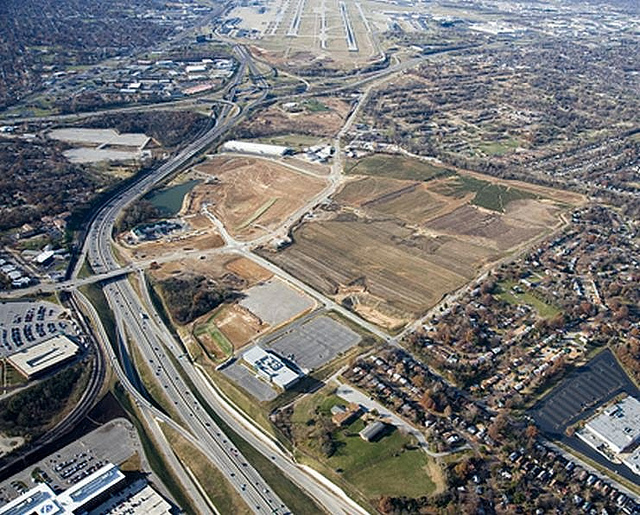 The Charlie Brennan Show on KMOX was recently host to a noted aerial logistics expert who said “don’t bet on” a Saint Louis-China aerial logistics hub taking place. But, after reading his argument, I can only think that Michael Boyd, the expert commenter, doesn’t recognize the whole picture of the “Big Idea’s” potential besides a runway.
The Charlie Brennan Show on KMOX was recently host to a noted aerial logistics expert who said “don’t bet on” a Saint Louis-China aerial logistics hub taking place. But, after reading his argument, I can only think that Michael Boyd, the expert commenter, doesn’t recognize the whole picture of the “Big Idea’s” potential besides a runway.
The value outside this expert’s eyes, and the key behind the “Big Idea” efforts, lies in the development of the open lands right next to the airport. Efforts to build a “hub” started with the McKee family’s original promotion of the “Big Idea” as it relates to their two major developments: North Park, in the land abated for noise reduction, and NorthSide Regeneration, the mega-plan for the economic redevelopment of North Saint Louis a couple miles down Highway 70. The breadth of open land proximate to Lambert, and how it would be developed, presents a competitive advantage for attracting the Chinese business that no other major airport in the US currently can.
Without these properties, the expert’s argument would carry much more weight, and he’d correct. However, by not recognizing the value that these lands, and how they would be developed, present for businesses to be involved in importing & exporting with the Chinese, his argument loses steam. Add-in the relationships built between China and the local diplomatic corps, building the viability of a “hub’s” successful development, and the probability of a deal being brokered jumps.
Long-term, it’s really indeterminable whether or not a “hub” will fully develop beyond a few flights a week, as it is improbable for anyone to accurately predict the future. That said, long-term success looks rather promising when the development process is taken as a whole.
The main contention this expert brings is a great point that we all must recognize. From the article:
(Aviation industry observer Michael) Boyd said St. Louis is simply too far from the remaining North American markets China hopes to reach, to make any large scale export operation feasible. “The argument that they’re going to ship goods into St. Louis and then transship it everywhere, totally negates the reason to ship it by air in the first place, which is to get goods to market fast,” Boyd explained.
This is very true. Compared to many other US cities, Saint Louis is distant from many others. We’re 300 miles to Chicago, and about 250 miles apiece from Kansas City, Indianapolis, Louisville, and Memphis. They’re each far enough away for Saint Louisians to debate the value between driving and flying there. But when considering his argument, let’s recognize that Saint Louis for decades was seen as too far to travel for another industry: touring music concerts.

The rule of thumb for many touring acts is to go between cities that are within a relatively short travel between stops, not just for the band itself but for the concerts’ supporting crews to properly set up for their band’s shows. Our distance from the above-named cities pushed many tours away from doing shows in Saint Louis. For example, the Grateful Dead, one of the most prolific touring acts ever in US history, went for many, many years without playing in Saint Louis before finally doing shows at Riverport in the early/mid-90s. Sure, they sold out their shows here every time they played here, but they weren’t necessarily fans of the increased traveling their tours had to do, especially for prepping the concerts. When we heard of other concerts not playing Saint Louis on their national tours, we had to accept that it wasn’t the market, but the geography, that was the reason for their not stopping in Saint Louis for a show.
Concert stops were even further in decline with the end of famed concert venue Mississippi Nights, whose absence pushed further away smaller bands who couldn’t plan to play at larger venues such as the seasonal Riverport or the oftentimes previously-booked Savvis/Scottrade Center.
However, this all changed with an important real estate development managed from the top-down: The Pageant.
When it first was thought up, many people thought that The Pageant would flop for many reasons. Besides being outside the normal touring routes of concert venues because of Saint Louis’ geography, many locals thought it wouldn’t work because it was planned for the then-undeveloped, speculative “East Loop”, still on Delmar but across from the pre-existing businesses on the West side of Skinker. After all, ten years ago the Loop suddenly ended at Eastgate, with the Delmar Lounge the Eastern outpost of the entire strip.
However, led from the top down by Joe Edwards, the brains behind Blueberry Hill and the unofficial “mayor” of the Loop, The Pageant saw construction move forward. And it wasn’t the only development he undertook, all developed in a vertically-integrated model as part of a system which attracted the musicians & the concert industry back to Saint Louis.
First, there was Edwards’ Pin-Up Bowl, a critically-heralded night club that first capitalized on combining high-end cocktails with bowling, now a major national trend, garnering acclaim from major travel & restaurant reviewers as one of the best bars in the US.
The major benefit of the Pin-Up Bowl to touring concerts was that it attracted bands to play in Saint Louis because of the added value Pin-Up provided the bands themselves. Besides having a state-of-the-art music venue to play, the bands now had their own playground to go to before and after the shows they were to play. With the management of The Pageant working proactively with Pin-Up Bowl, bands & their crews were quick to hang out at the Pin-Up to have fun drinking and bowling, unwinding after their shows, something other venues couldn’t provide them. Right after The Pageant opened, stories sprung up repeatedly of bands like The Strokes going bowling right after their sets, on lanes previously reserved for them. Word of fun to do on-site after a concert quickly spread around the touring music industry, and Saint Louis became more popular a destination because of this regard.
Second, Edwards saw to building the Moonrise Hotel, a boutique hotel build atop a former funeral parlor based directly between The Pageant and the Pin-Up Bowl, and featuring luxurious rooms, a solid restaurant on the ground floor, and a rooftop bar with some of the best views of Saint Louis, including of Forest Park, the Loop, and the Clayton skyline.

Now, the bands had a place to stay in total comfort, right next to the concert hall, and next door to the already-welcoming Pin-Up Bowl, all under the same management group. It operates now as a complete package to touring musicians.
And thirdly, the investments made into The Pageant, and his other developments, led to Edwards’ businesses being complimented by other new developments East of Skinker, now viably known as the East Loop. In cooperative planning, rehabilitation and new construction has taken place that now house a number of new retail businesses, most famously Pi Pizza. The Regional Arts Commission opened their new headquarters in the East Loop just before The Pageant opened. Long-vacant buildings with minimal businesses were redeveloped and have thrived, bringing people into the neighborhood and building a critical mass, complimenting what Edwards’ top-down planning had already overseen.
The effect of all this? The Pageant was named the #4 Venue for concerts in the world by Pollstar, following NYC, DC, and Brussels, and ahead of Las Vegas, which is known for “all-inclusive” facilities management. Meanwhile, LA first shows up at #8, Austin at #9, and Seattle at #10. Boston’s at #22. Chicago first appears at #30; other close-to-Saint Louis stops include Elizabeth, IN (just outside Louisville) at #80, and Champaign-Urbana, IL at #96, with no major venue stops for Kansas City, Indianapolis, or Memphis. Instead of being a dead-spot for concerts, Saint Louis is now home to one of the most elite venues in the world.
Not bad for a venue in a geographical no-concert city within its first ten years.
With this success, Saint Louis is now a must-stop for countless touring bands. Even for bands that aren’t set to play at The Pageant, many others are now choosing to travel to Saint Louis for shows at many other venues, such as Off Broadway and the Old Rock House, sites in a city they may not have chosen to visit beforehand. Saint Louis’ growth as a must-stop city for touring concerts has even seen growth of major show stops at Columbia, MO and Champaign-Urbana, IL, where the Universities of Missouri and Illinois already boast fans who now are more able to see more shows they may not have seen otherwise, based on their newly-important geographic proximity to Saint Louis.
I’m sure that, for the music industry, other experts comparable to “aviation industry observer” Michael Boyd would have said growth of Saint Louis as a stop for touring concerts wasn’t possible. And they’d be right to state as much based on an outside viewpoint without regard to such top-down planning. However, Saint Louis has seen concert stops grow exponentially because of The Pageant, turning a speculative development into one of the world’s favorite concert venues. Credit for this change, despite the geographic isolation of Saint Louis for concerts, lies directly with Joe Edwards and his ability to manage & develop from a top-down, vertically integrated model.
Therefore, based on the local past success of this business strategy, we can look to the “Big Idea” with similar eyes.
The McKee-led developments at North Park and NorthSide Redevelopment have both been positioned as vital to the creation of a “hub” for Chinese logistics to the Saint Louis market, with the ability to manage from the top-down, in a vertically-integrated fashion, supporting elements to the creation of a deeper market for transportation logistics at Lambert. When we add in multi-layered governmental support towards this strategy, the value opportunities exist for truly transformative growth.
 The centralized planning & organization for developing a logistics network being made in Saint Louis appeals to the Chinese top-down business mindset, which historically has preferred vertically-integrated economic development. A major focus of this deal has been the ability for the Chinese to run their own operations at Lambert, as opposed to having them deal with an American business managing their operations should they decide to send flights over. Complimenting this independence over flight management with a constructive partnership towards cooperatively developing supporting business networks, including real estate development, is greatly appealing.
The centralized planning & organization for developing a logistics network being made in Saint Louis appeals to the Chinese top-down business mindset, which historically has preferred vertically-integrated economic development. A major focus of this deal has been the ability for the Chinese to run their own operations at Lambert, as opposed to having them deal with an American business managing their operations should they decide to send flights over. Complimenting this independence over flight management with a constructive partnership towards cooperatively developing supporting business networks, including real estate development, is greatly appealing.
There already exist multiple companies, industries, and industry segments that can further the development of a logistics hub at Lambert between the US and China, such as Emerson and Express Scripts. With the growth of North Park and NorthSide Redevelopment towards the needs of a China-focused logistics base, new companies can be expected to locate in Saint Louis, capitalizing on this growing relationship based on vertical planning and oversight. From such growth, the likelihood of success increases greatly, more than many experts in aerial logistics like Mr. Boyd may recognize, should they realize that the development of a “hub” between Saint Louis and China is more than just a runway.
After all, it’s been done here before.
 The Charlie Brennan Show on KMOX was recently host to a noted aerial logistics expert who said “
The Charlie Brennan Show on KMOX was recently host to a noted aerial logistics expert who said “
